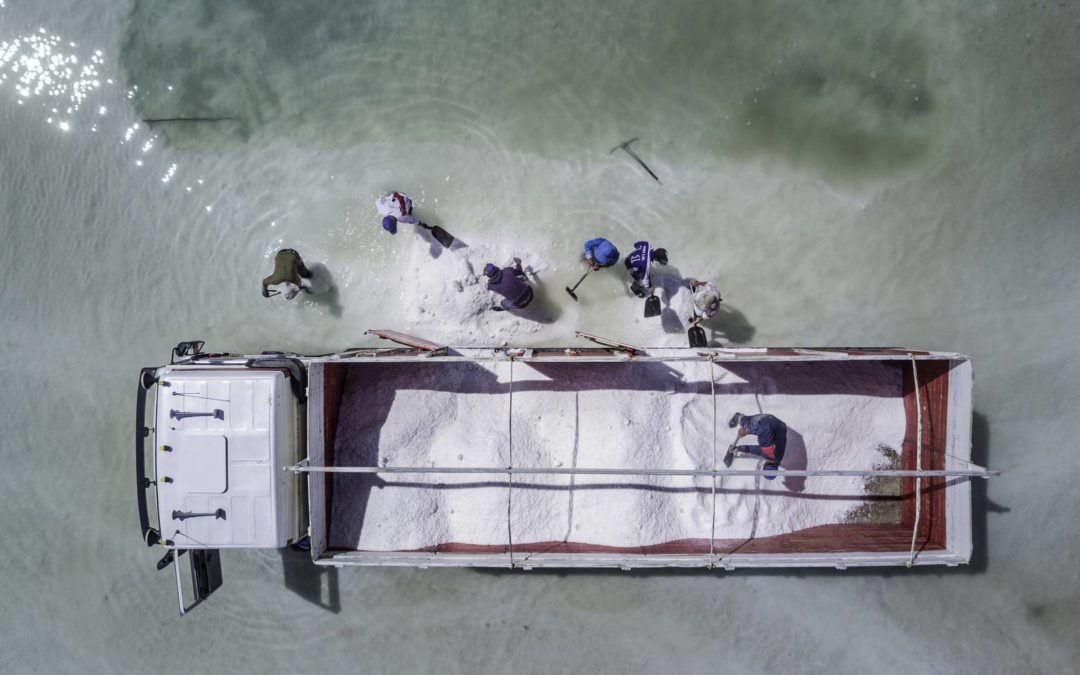SOURCE: Wired
DATE: August 8, 2018
SNIP: Here’s a thoroughly modern riddle: what links the battery in your smartphone with a dead yak floating down a Tibetan river? The answer is lithium – the reactive alkali metal that powers our phones, tablets, laptops and electric cars.
In May 2016, hundreds of protestors threw dead fish onto the streets of Tagong, a town on the eastern edge of the Tibetan plateau. They had plucked them from the waters of the Liqi river, where a toxic chemical leak from the Ganzizhou Rongda Lithium mine had wreaked havoc with the local ecosystem.
There are pictures of masses of dead fish on the surface of the stream. Some eyewitnesses reported seeing cow and yak carcasses floating downstream, dead from drinking contaminated water. It was the third such incident in the space of seven years in an area which has seen a sharp rise in mining activity, including operations run by BYD, the world’ biggest supplier of lithium-ion batteries for smartphones and electric cars.
Lithium-ion batteries are a crucial component of efforts to clean up the planet. The battery of a Tesla Model S has about 12 kilograms of lithium in it, while grid storage solutions that will help balance renewable energy would need much more.
Demand for lithium is increasing exponentially, and it doubled in price between 2016 and 2018. According to consultancy Cairn Energy Research Advisors, the lithium ion industry is expected to grow from 100 gigawatt hours (GWh) of annual production in 2017, to almost 800 GWhs in 2027.
As the world scrambles to replace fossil fuels with clean energy, the environmental impact of finding all the lithium required to enable that transformation could become a serious issue in its own right. “One of the biggest environmental problems caused by our endless hunger for the latest and smartest devices is a growing mineral crisis, particularly those needed to make our batteries,” says Christina Valimaki an analyst at Elsevier.
In South America, the biggest problem is water. The continent’s Lithium Triangle, which covers parts of Argentina, Bolivia and Chile, holds more than half the world’s supply of the metal beneath its otherworldly salt flats. It’s also one of the driest places on earth. That’s a real issue, because to extract lithium, miners start by drilling a hole in the salt flats and pumping salty, mineral-rich brine to the surface.
Then they leave it to evaporate for months at a time, first creating a mixture of manganese, potassium, borax and lithium salts which is then filtered and placed into another evaporation pool, and so on. After between 12 and 18 months, the mixture has been filtered enough that lithium carbonate – white gold – can be extracted.
It’s a relatively cheap and effective process, but it uses a lot of water – approximately 500,000 gallons per tonne of lithium. In Chile’s Salar de Atacama, mining activities consumed 65 per cent of the region’s water. That is having a big impact on local farmers – who grow quinoa and herd llamas – in an area where some communities already have to get water driven in from elsewhere.
There’s also the potential – as occurred in Tibet – for toxic chemicals to leak from the evaporation pools into the water supply. These include chemicals, including hydrochloric acid, which are used in the processing of lithium into a form that can be sold, as well as those waste products that are filtered out of the brine at each stage. In Australia and North America, lithium is mined from rock using more traditional methods, but still requires the use of chemicals in order to extract it in a useful form. Research in Nevada found impacts on fish as far as 150 miles downstream from a lithium processing operation.
Two other key ingredients, cobalt and nickel, are more in danger of creating a bottleneck in the move towards electric vehicles, and at a potentially huge environmental cost. Cobalt is found in huge quantities right across the Democratic Republic of Congo and central Africa, and hardly anywhere else. The price has quadrupled in the last two years.
Unlike most metals, which are not toxic when they’re pulled from the ground as metal ores, cobalt is “uniquely terrible,” according to Gleb Yushin, chief technical officer and founder of battery materials company Sila Nanotechnologies.
“One of the biggest challenges with cobalt is that it’s located in one country,” he adds. You can literally just dig up the land and find cobalt, so there’s a very strong motivation to dig it up and sell it, and a a result there’s a lot of motivation for unsafe and unethical behaviour.” The Congo is home to ‘artisanal mines’, where cobalt is extracted from the ground by hand, often using child labour, without protective equipment.

